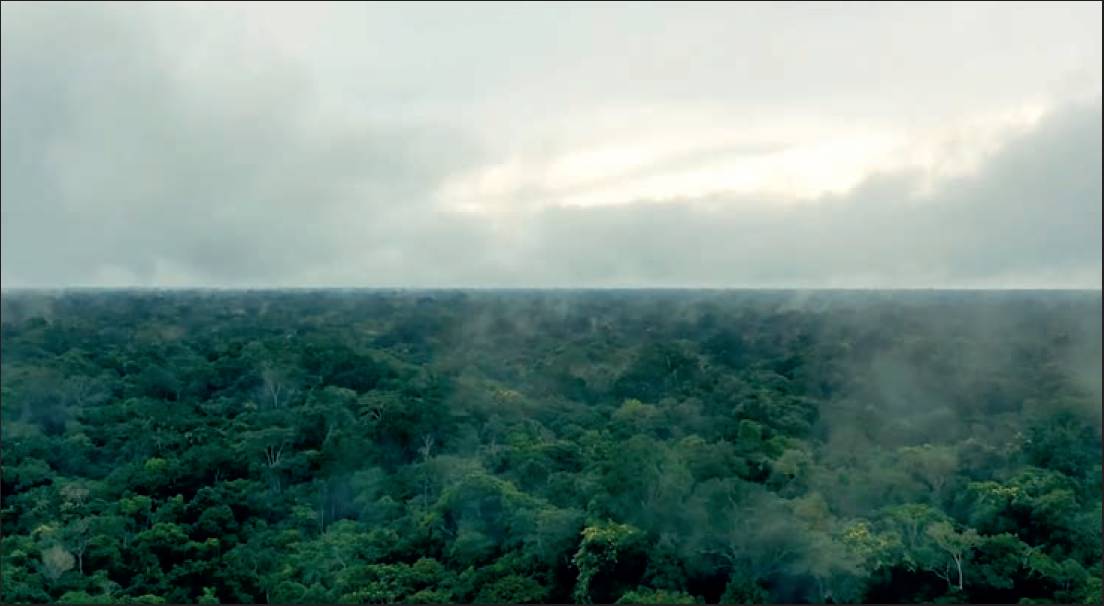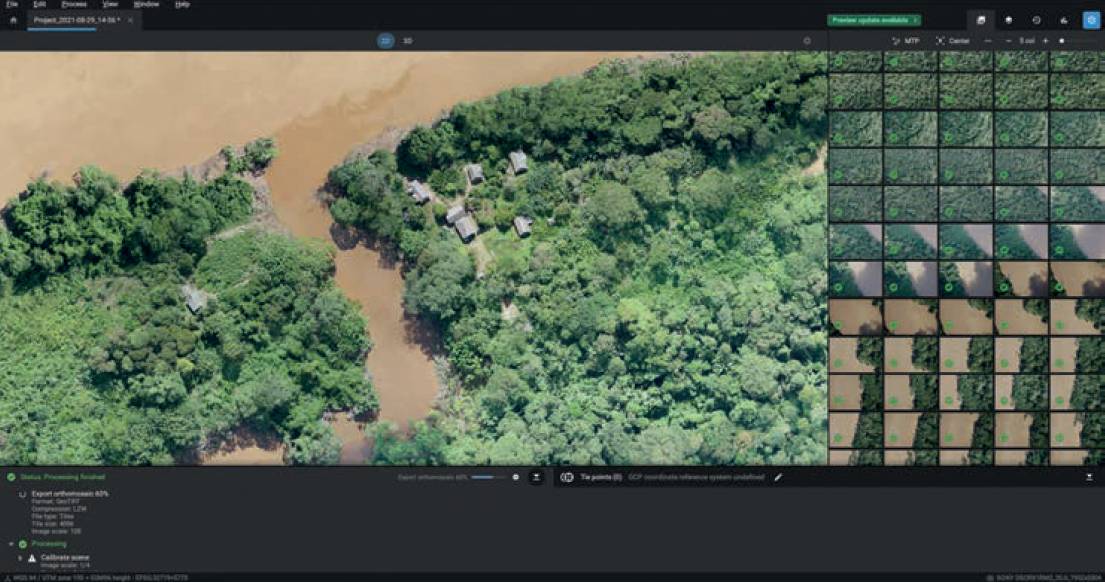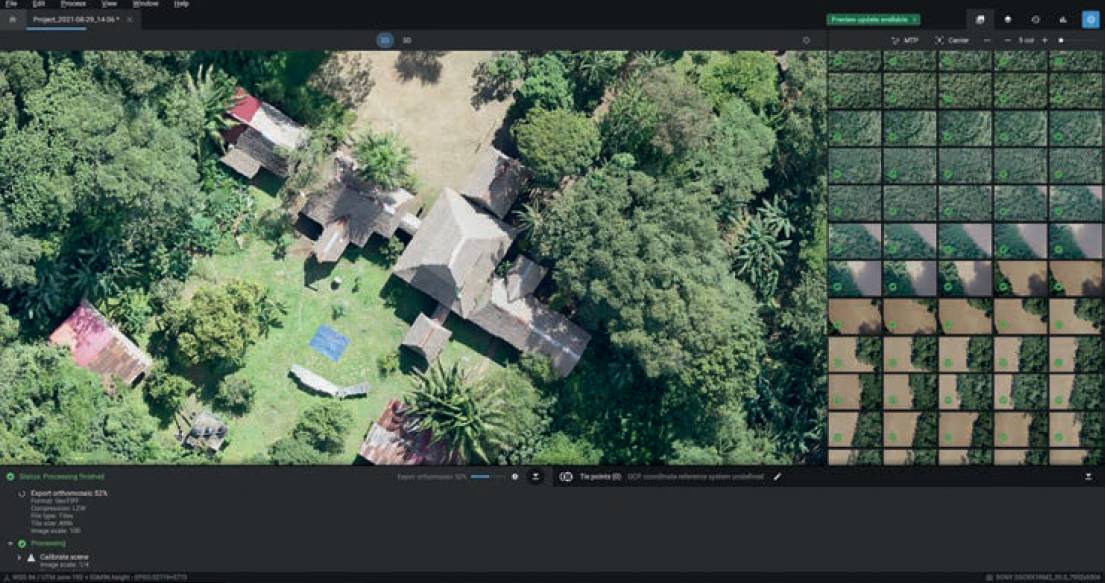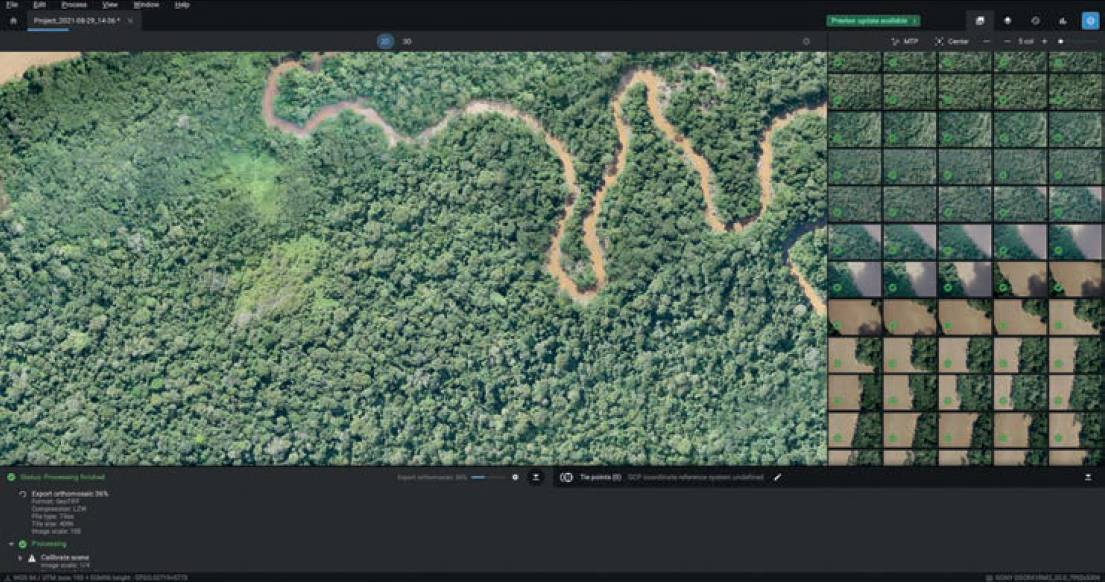Helping to protect the rainforest in Peru with drone mapping
Eloise McMinn Mitchell, Pix4D

Saving the Amazon tropical rainforest from deforestation
THE Amazon rainforest is nicknamed the ‘lungs of the earth’ because it is a vital source of oxygen for the entire planet as well as the home to millions of species of animals and plants. Like many wilderness areas, it is under threat from human activities. Just 2.8% of the world’s terrestrial surface is still ‘wild’ or mostly intact. In an effort to stop this number from shrinking further, Wilderness International, a non-pro fit organisation (NGO) which legally buys wilderness areas and protects them for the future, has been buying unique, intact natural areas in Peru and Canada to ensure those few remaining areas will be physically and legally protected.
Based in Canada, Germany, and Peru, Wilderness International (WI), through its local teams purchase land in ecologically significant areas. These purchases are refunded or refinanced by donations, meaning that the NGO needs to show great transparency with its donors to show the real and tangible impact of their support.
After the land is purchased, its teams visit to collect scientific datasets and imagery to assess the exact size, health, and safety of the forest. To help achieve this they map the tropical rainforest. It is an incredibly difficult challenge due to the dense vegetation and limited access and in order to continue to preserve the delicate ecosystem they operate in; the teams have to take into account all the necessary measures to not impact the forest. To do so they use drones to survey the rainforest from the air, and software to process the images collected. For this they used Quantum-Systems drones and Pix4d software.
In Peru, WI is gathering data for 3,000 hectares, looking at RGB, multispectral, and lidar data. The objective is to analyse plant health with the multiband data, as well as create normal orthomosaics. Those orthomosaics will also be shared with donors of Wilderness International so they can see the exact section of the rainforest that they have sponsored.
The benefits of using drones and aerial mapping are:
- Monitor vegetation health and assist conservation efforts.
- Provide transparency and be accountable to Wilderness International donors.
- Check for illegal logging on the Wilderness International land.
The project

The Amazon is full of dense vegetation, so traveling via the rivers makes it easier to access the forest.
The Amazon rainforest is nicknamed the ‘lungs of the earth’ because it is a vital source of oxygen for the entire planet as well as the home to millions of species of animals and plants
Identifying the best hardware and software to map large areas
The plan to map the rainforest areas purchased by Wilderness International first began in 2005 when the organisation was founded and realised that aerial images would be ideal for creating minimally invasive forest maps.
In 2021, Pix4D was contacted for the challenge.
By mapping 3,000 hectares with cameras mounted on drones, the final dataset would be at least 20,000 images. PIX4Dfields was also provided for looking at specific sections and conducting multispectral image analysis of the tropical rainforest’s health.
Using photogrammetry and drones in the Peruvian rainforest

Wilderness International work from within the Amazon, with dense forest all around them.
To collect the dataset, a team set out with unmanned aerial vehicles (UAV) and remote sensing expert Martin Herkommer from Quantum-Systems in the summer of 2021. Together, they travelled to the heart of the Amazon in Peru, along with several conservationists who wanted to study the wildlife living there.
On-site, the first step was finding a takeoff space in the dense vegetation for the fixed-wing Quantum-Systems Trinity drone to be launched. They found a space near a river to take off. The drone captured RGB, multispectral images, and lidar data and equipped with PPK it gathered geolocational data due to its connection with a GNSS reference base station.
Processing drone imagery of the Amazon

PIX4Dmatic processed this dataset to enable Wilderness International to provide donor transparency.
The dataset totalled 30,000 images. The RGB images were imported to PIX4Dmatic to create a 2D map. This type of dataset can be challenging due to the inconsistent shapes in a forest canopy. The data processing was done by splitting the 30,000 images into three sets of 10,000 images, each of which took 18 hours to process. The orthomosaics created were used to identify specific regions of the forest that were sponsored by particular donors, who could then receive an orthophoto of the exact coordinates of the space they sponsored.
Measuring these light reflections will tell researchers about the health of plants, their age, and can be used to create vegetation indices to learn information about the forest that is invisible to the human eye. Conservationists can use this data to analyse planting projects or restoration efforts.
The multi-spectral images were imported to PIX4Dfields, which can analyse how plants reflect green light. Measuring these light reflections will tell researchers about the health of plants, their age, and can be used to create vegetation indices to learn information about the forest that is invisible to the human eye. Conservationists can use this data to analyse planting projects or restoration efforts.
Finally, the outputs from both pieces of software were used to identify any illegal logging on the land purchased by Wilderness International that it could report and prevent from happening again with improved protection measures around the area.
Replicating drone-mapping workflows to preserve other sites
With aerial surveys, Wilderness International is helping to protect the Amazon in Peru. Thanks to the drone map, WI will be replicating this workflow at another conservation site in British Columbia, Canada, where it has purchased 450 hectares of temperate rainforest. Buying these properties of land makes protecting them easier for Wilderness International and also means it can check the land with drones without needing special permission beyond the normal local flight regulations.
Using the drones and the software, Wilderness International is protecting forests and monitoring their health on an impressive scale. Now, as donors receive certificates with georeferenced maps of the land they sponsor, they too are contributing to an amazing cause and helping fight climate change.
Eloise McMinn Mitchell, Pix4D